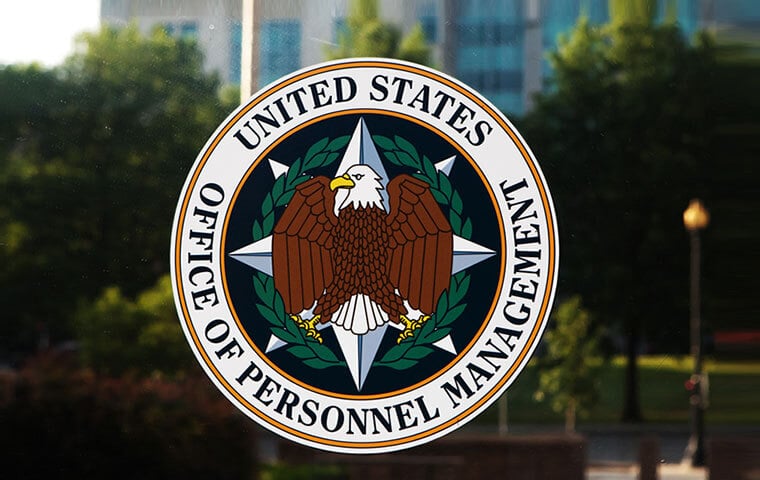 OPM asked agencies and payroll providers to support retirement applications through a series of actions. Image: Mark Van Scyoc/Shutterstock.com
By: FEDweek Staff
OPM asked agencies and payroll providers to support retirement applications through a series of actions. Image: Mark Van Scyoc/Shutterstock.com
By: FEDweek StaffFollowing is an OPM memo to agencies on preparing for the annual surge in retirement applications around the turn of the year.
OPM administers both the Federal Employees’ Retirement System (FERS) and the Civil Service Retirement System (CSRS). These two programs represent the federal government’s firm commitment to ensuring that civil servants who have dedicated their careers to public service are able to retire with dignity and economic security.
Collectively, through FERS and CSRS, OPM provides monthly payments to 2.7 million retirement annuitants in annual disbursements worth over $90 billion. OPM is committed to ensuring that these payments continue to be made accurately and on time to the annuitants who earned them over the course of their careers.
OPM understands that the retirement application process can be daunting for some new retirees and their families. OPM, in partnership with Congress, is increasing staff capacity and streamlining processes to continue to reduce our inventory and monthly processing times in the short term. OPM is also working to develop a digital processing system built for the twenty-first century. These efforts are critical to providing annuitants with excellent and responsive customer service.
As OPM Director, I am requesting your agency’s assistance in this process. On average, more than a quarter of all applications submitted to OPM for adjudication are submitted with errors that delay annuitants’ receipt of their full retirement annuity. The best way to reduce these delays is to ensure that applications are free from errors before they are submitted to OPM, and for agencies, payroll providers, and OPM’s Retirement Services to work closely to address questions and errors in a timely manner. OPM developed its monthly error report as a starting place for such discussion and collaboration.
Toward this goal, I am requesting that agencies and payroll providers support employees’ retirement applications through the following actions:
• Provide early input to OPM on the number of retirement application packages your agency expects to submit to OPM during the retirement surge period of December 2023–March 2024. While exact numbers may not be possible, projections and expectations shared on a monthly basis will help OPM staff to manage workloads appropriately. Agencies and payroll providers should send these projections and expectations directly to benefits@opm.gov, and should send the first update to OPM no later than November 30, 2023.
• In collaboration with shared service payroll providers, ensure complete retirement packages are transmitted to OPM within 32 days of the employee’s separation from federal service. While OPM begins counting processing time upon receipt of a retirement application package, the gap between retirement and receipt to OPM adds to the time a retiree waits for their first payment. Expediting this process can provide a better and faster experience for annuitants.
• Implement an internal quality assurance process to review each retirement application package before it is sent to OPM. On average, a quarter of all retirement application packages include errors that require additional information or updated forms from the applicant, agency, or payroll provider. This can lead to substantial delays in retirees receiving their full annuity payments. For example, completed applications can be processed in as little as 30 days compared to those with missing documentation or information, which can take much longer. Internal quality assurance at the agency level will reduce errors and shorten processing times. OPM is similarly committed to reducing error rates and working collaboratively with agencies and payroll providers to answer questions and resolve errors more quickly.
• Send your agency’s HR Benefits Officers and HR retirement processing staff to OPM’s annual training every summer on processes and best practices for completing retirement application packages. HR Benefits Officers should also participate in our quarterly Benefits Officers Network meetings. These trainings and meetings ensure that all HR Benefits Officers receive timely updates and information.
• Encourage your HR Benefit Officers and HR Specialists to join us at our Retirement Operations Center in Boyers, PA, to participate in processing retirement application packages during our busiest time of year. This annual opportunity takes place during the retirement surge period of January through March. OPM welcomes the opportunity to show agency employees firsthand how we process retirement application packages and how agency knowledge and support of this process helps to reduce the backlog and process applications more quickly. We appreciate the participation from agencies like DoD, Department of the Army, DOJ, USPS, and VA that have joined us in previous years, and look forward to welcoming more agencies to western Pennsylvania in the future.
• Ask your HR Benefits Officers and HR Specialists to read OPM’s new Retirement Quick Guide—now available on our website—and to share it with all employees completing retirement applications. This guide provides up-to-date information on application processing times, what to expect at each step, and additional information to help employees navigate the retirement process.
Thank you for your attention to and implementation of this information. OPM is ready to assist each agency and payroll provider to ensure the submission of full and complete retirement packages to OPM. We look forward to working with all HR Benefits Officers and Specialists on behalf of all federal annuitants.
5 Steps to Protect Your Federal Job During the Shutdown
Over 30K TSP Accounts Have Crossed the Million Mark in 2025
The Best Ages for Federal Employees to Retire
Best States to Retire for Federal Retirees: 2025
Primer: Early out, buyout, reduction in force (RIF)
See also,
OPM Guidance Addresses Pay Issues arising During, After Shutdown

